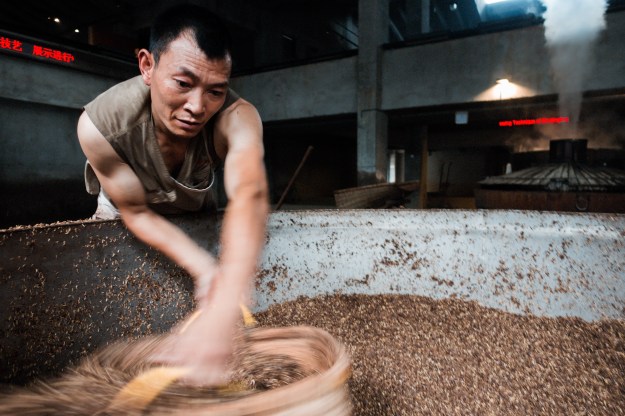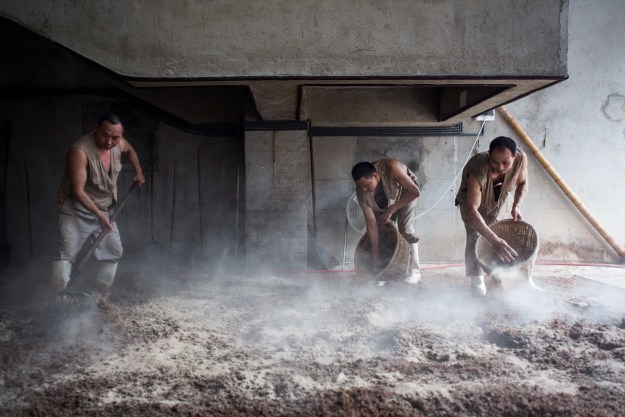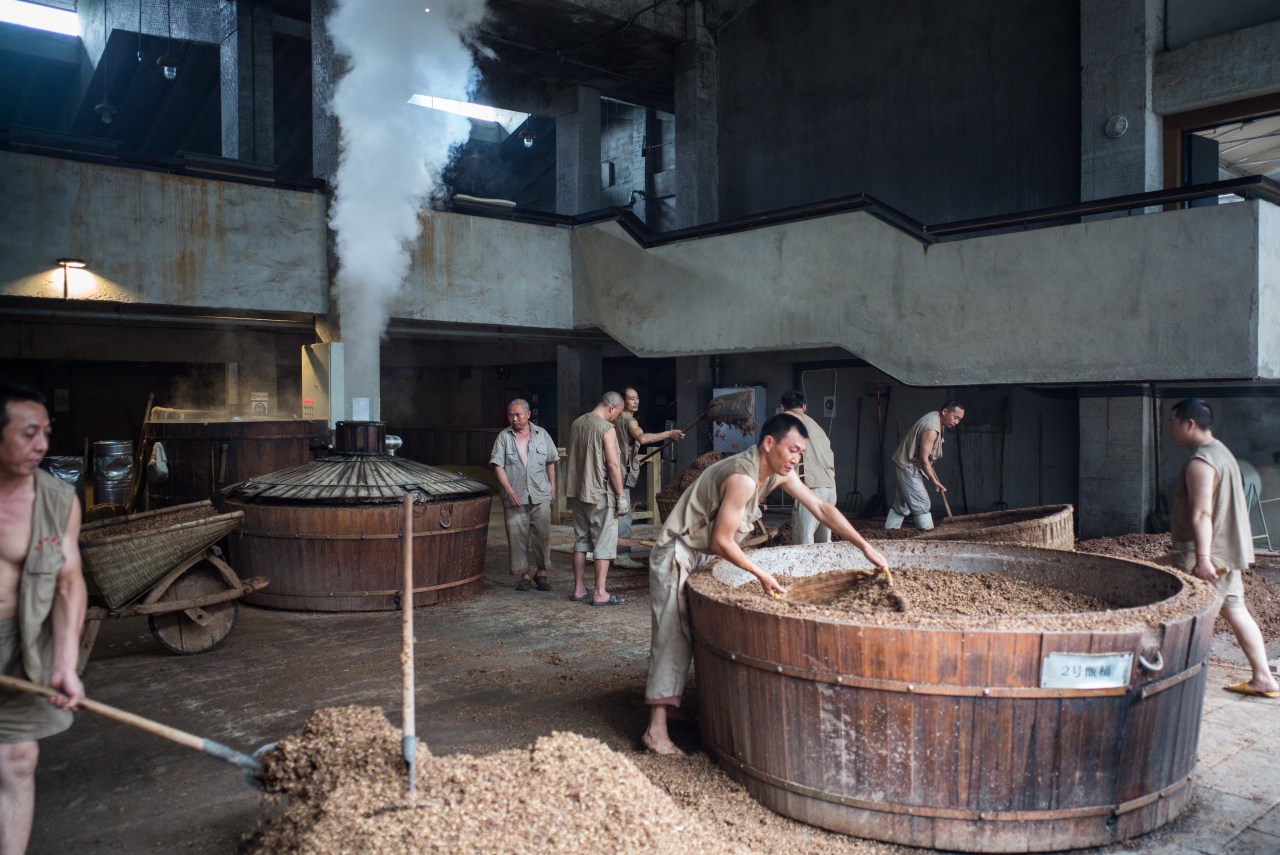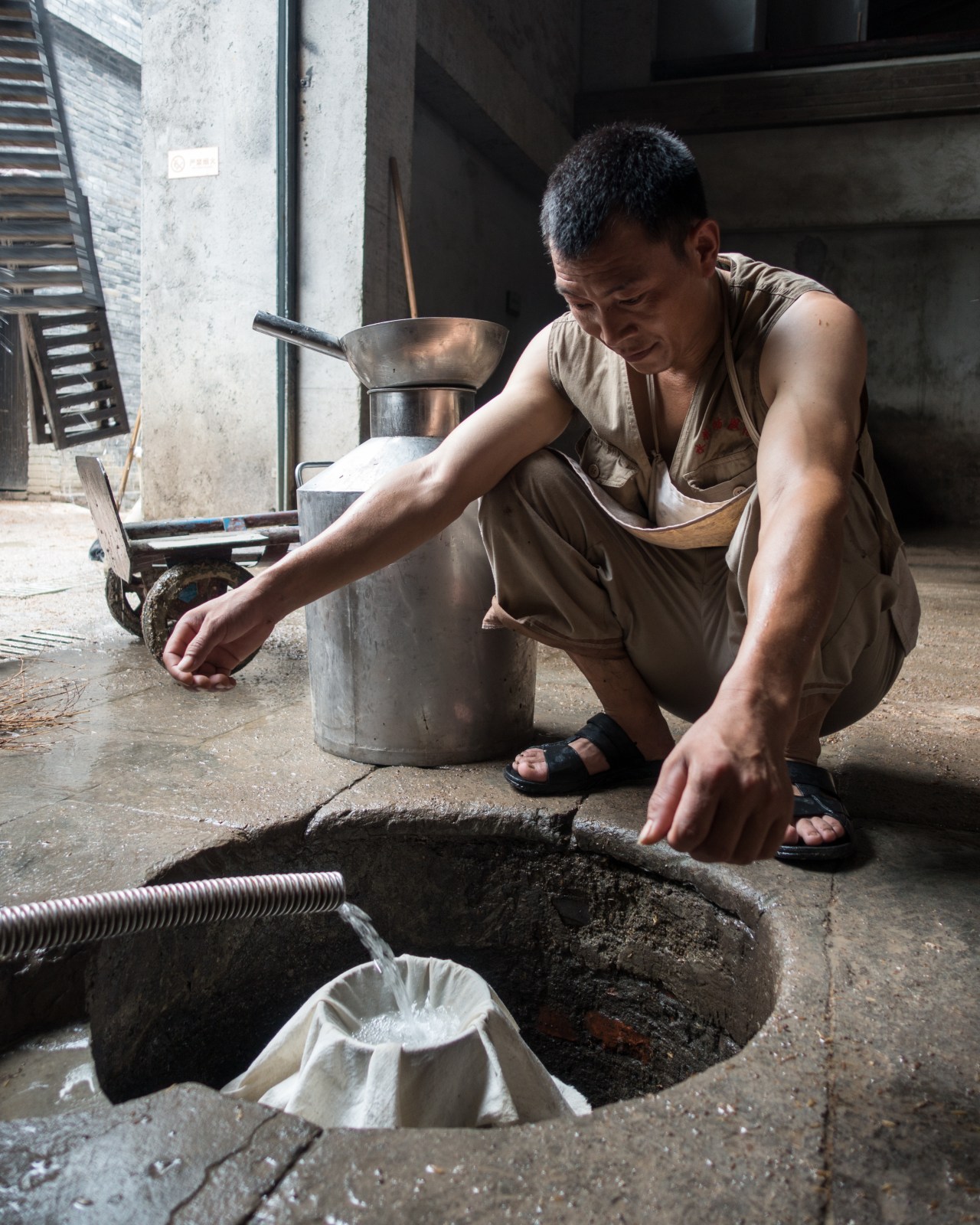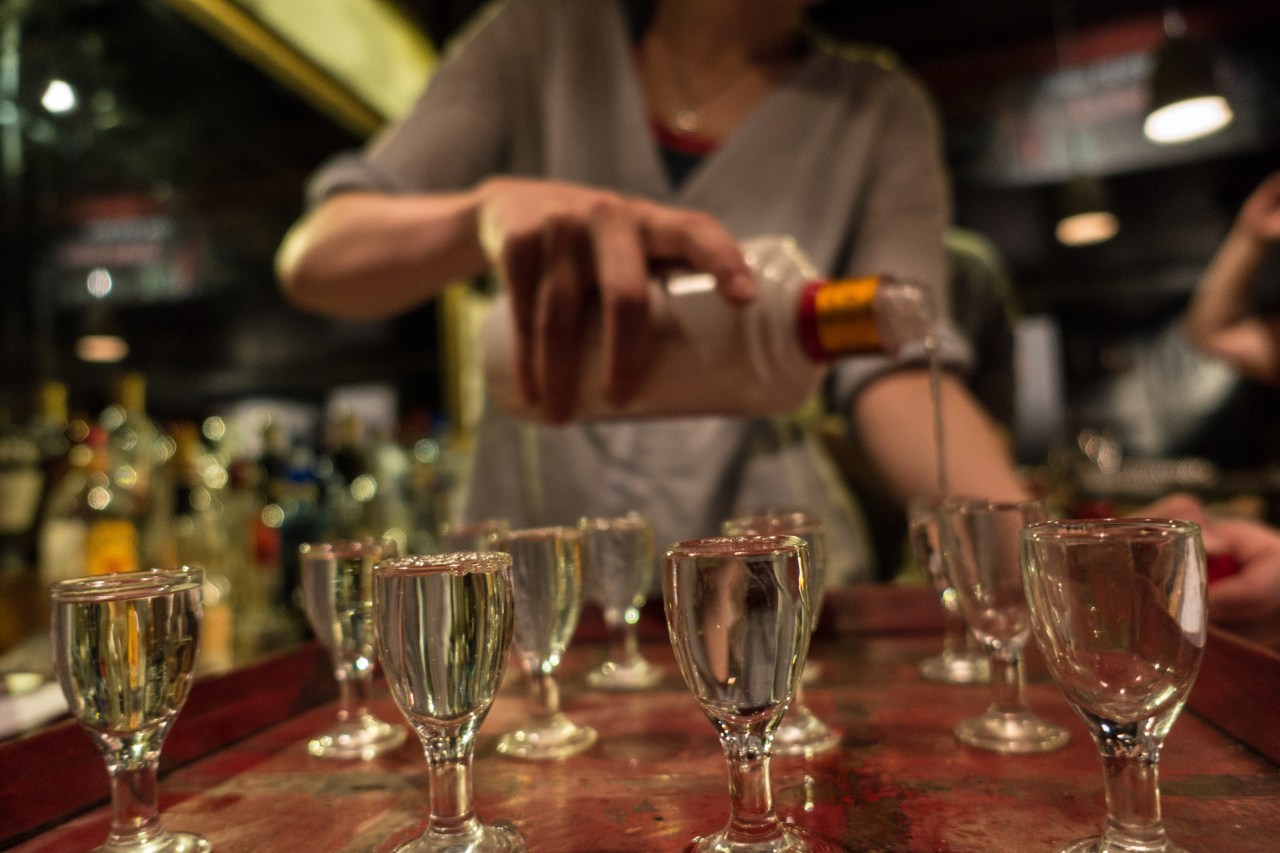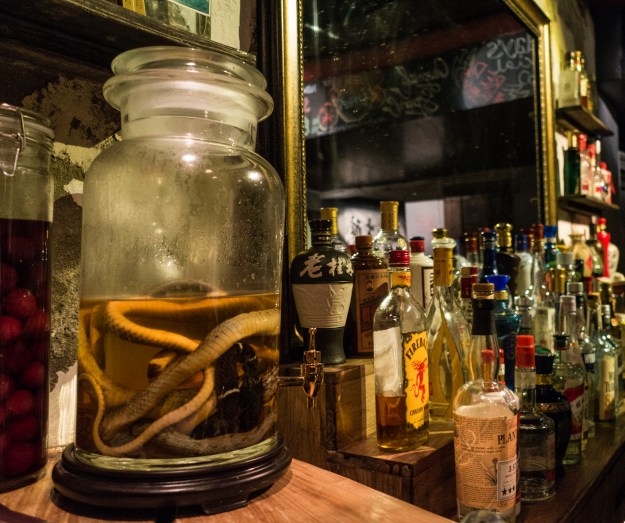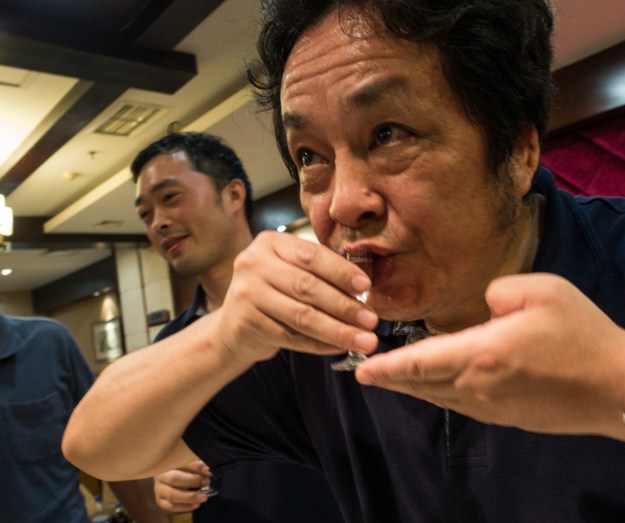Given baijiu’s history and deep cultural significance, I found myself somewhat guilt-stricken when I finally had my first glass at a well-regarded Peking duck house in Beijing and found it nearly unpalatable.
I was on a junket in China promoting baijiu, the country’s national liquor, to Westerners. The potent libation is made from grains like sorghum, rice, corn, and wheat and boasts both a high alcohol content (typically 40% to 60%) and huge consumption levels, driven by the enthusiastic endorsement of nearly 1.4 billion Chinese.
In fact, it is often cited as the most widely quaffed spirit in the world.But, my guide watching me hopefully as I held down my first taste, the best I could politely muster was, “It’s got a pine-nut thing going on.” Meanwhile in the recesses of my brain echoed the high-pitched voice of Ralph Wiggum, the Simpsons character, after eating poisonous berries: “They taste like—burning!”
Baijiu touches nearly every facet of life in China, marking triumphs and tragedies, punctuating business dinners and government banquets. It is even said to have fueled Mao Zedong’s troops during the Long March (1934–36). It represents a tradition of Chinese distillation and fermentation that dates back thousands of years.
At that dinner, we continued imbibing baijiu varieties at price points low to high. I never quite got over that inaugural glass, but my palate did evolve. I drank glasses of baijiu that exhibited the barnyard funk often found in natural wines, tasted some that recalled the pungent soft cheeses of France, and experienced in others the oily mouthfeel I associate with small-batch mezcal.
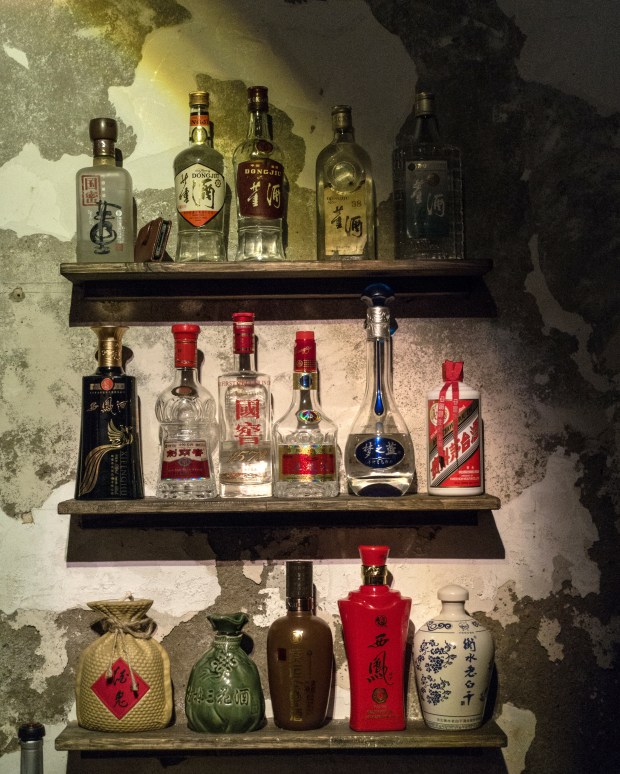
I finally found my baijiu groove in Chengdu, the capital of Sichuan province and home to the 600-year-old Shui Jing Fang distillery. There is something painfully addictive about Sichuan cuisine. It’s an endorphin rush triggered by taste buds pushed to near agony by spice and yet balanced by wave after wave of complex deliciousness, cutting through the heat. Tables are pounded, brows are wiped, and shots are consumed. It is in this atmosphere that baijiu thrives.
During a dinner of chopped chicken with Sichuan pepper and smoked duck, I engaged in a toasting war with a group of airplane mechanics on a company outing. The boss raised a glass and gleefully proclaimed, “With me, it’s good food, good drink, good women!” He proceeded to share his business card and another bottle of baijiu. (Accepting drinks without also buying a round of his own would break with centuries-old custom.)
This is the beauty of baijiu. Whether the bottle costs $1 or $1,000, baijiu is about conviviality and the bonds of drinking together and composing toasts. Protocol requires a hearty Ganbei! Glasses are lowered as they’re clinked to show humility. You end the ritual with your glass tilted forward to prove you have indeed finished your shot.
To drink a glass of baijiu is to consume the distilled complexity of China in a single gulp and to appreciate all that the country represents, even if it tastes like—burning.
